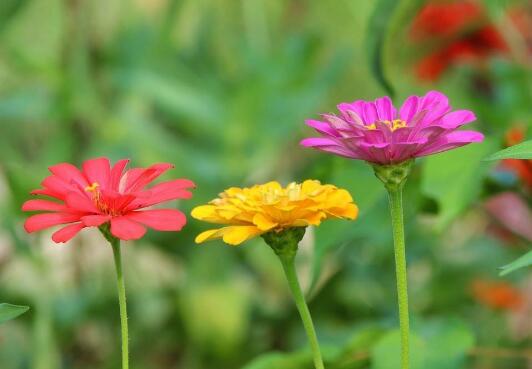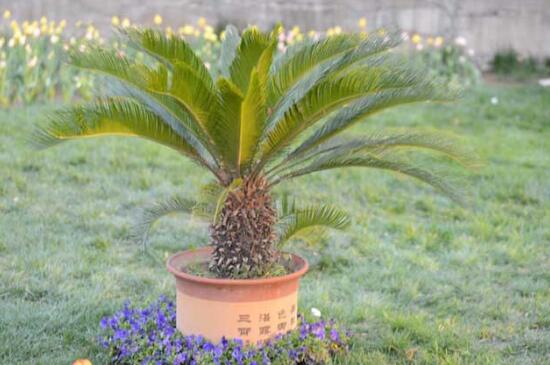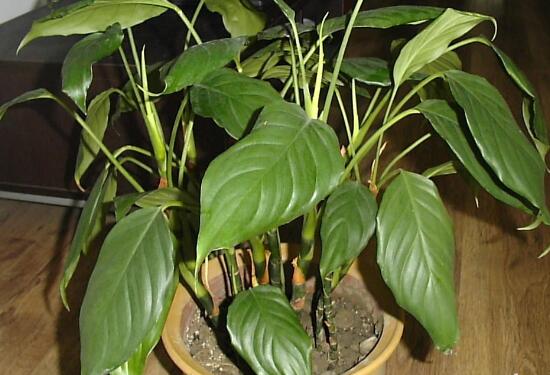The best month to sow zinnia seeds, the planting method of zinnia / planting from April to June
Among the breeding methods of zinnia, sowing and reproduction is a more commonly used method, and the survival rate is relatively high, but if you want to plant successfully, there are many things you need to pay attention to. When is the best month to sow seeds? What are the planting methods of zinzhiju? Next, the editor will take you to learn about it.
First, zinnia seeds are best sown in which month, from April to June

When we sow and breed the hundred-day chrysanthemum, it is very important to choose the right time to sow the hundred-day chrysanthemum. When it comes to sowing the hundred-day chrysanthemum, we can choose from early April to late June. Because the climate at this time is more suitable for its growth, so the survival rate will be relatively higher.
Second, the planting method of zinzhiju
1. Matrix, good drainage.
Before we plant a hundred-day chrysanthemum, we must first choose the substrate, which is a step to lay a good foundation, so we must choose a suitable one. Hundred-day chrysanthemum prefer loose and fertile sandy soil, which has good drainage and air permeability, which can better absorb nutrients and is not prone to stagnant water.
two。 Disinfection, medicament sterilization
We also need to disinfect the substrate and seeds before we propagate the seeds. We can soak the seeds with 1% potassium permanganate solution for 30 minutes to disinfect the seeds, while we can disinfect the matrix with 0.05% potassium permanganate or 1000 times formaldehyde, or we can use high temperature fumigation to kill germs, pests and grass seeds.
3. To soak in warm water.
After we have sterilized the seeds and substrates, we also need to soak the seeds in warm water for one day, and then take them out when they begin to absorb water and swell, which can play a role in promoting the germination of zinnia seeds. can improve its germination rate and germination speed.
4. Plant and sprout in 3-5 days
Before sowing, we first need to apply an appropriate amount of base fertilizer in the soil, then spread the sterilized seeds evenly on the soil surface, and then cover it with 1-2cm soil. After sowing, we should control the temperature between 21-23 ℃ and put it in half-shade, and then germinate in 3-5 days.
5. Follow-up, temperature control
When the seedlings of zinnia grow 2 leaves and 5-8cm high, we can transplant it once. It takes 45-60 days from planting to flowering due to different varieties, and the optimum temperature for its growth is 15-30 ℃. It needs sufficient sunlight except for the seedlings to be sheltered from the sun and rain. Planting the upper basin can use loose, fertile and well-drained sandy soil.
[zinnia] picture of zinnia | seed sowing of zinnia
❤ ❤ `. Indoor plants, this article is derived from [Decoration Information]
The stem of zinnia is erect and stout, covered with short hairs, the surface is rough, the leaves are opposite and sessile, and the leaves are clasped at the base. Flower diameter 4~1Ocm, large flower diameter 12~15cm. There are many colors of flowers, such as white, green, yellow, pink, red, orange and so on. The tubular flowers are concentrated in the center of the disk, the edge is divided, the florescence is from June to September, and the fruit maturity is from August to October. The weight of 1000 seeds is 5.9g and the life span is 3 years. In this issue, the editor shares with you the picture of zinnia and the way it is sown.
Hundred-day grass-growth habits like warm, not cold-resistant, afraid of heat, strong sex, drought tolerance, pimple tolerance, avoid continuous cropping. The root is deep and the stem is hard and not easy to lodge. It is suitable to grow in fertile and deep soil. The suitable temperature during the growing period is 15 ~ 30 °C, which is suitable for cultivation in the north. Dwarf species in hot areas, should be planted in light shade, there are about 20 species of the same genus, such as small hundred grass, fine leaf hundred grass and so on. It likes a warm climate, is not cold-resistant, likes sunshine, is resistant to drought and barren, and the suitable temperature for growth is 15 Mel 30 degrees Celsius, which is suitable for planting in the north. Hundred-day grass-the whole herb with medicinal value can be used as medicine, which has the effect of clearing heat, promoting dampness and detoxifying. Can also treat damp-heat dysentery; mammary abscess; furuncle. Internal administration: fried soup, 15-30g. External use: knowledge trial, fresh products tamping. Hundred-day grass-- flower language hundred-day grass (magenta) continuous love hundred-day grass (mixed color) in memory of an absent friend hundred-day grass (peroneal red) everlasting hundred-day grass (white) kind hundred-day grass (yellow) daily greetings
Zinnia-seed sowing 1. In the process of sowing, zinnia requires a well-drained, loose and fertile soil environment. Usually the germination temperature is 21 Mel 22 degrees, which needs to be covered with soil when germinating, and 2 Mel can germinate in 5 days. In the process of growth, the daily temperature should be kept at 18 degrees and the night temperature should reach 21 degrees. The time from sowing to flowering is generally 10 weeks. It is also worth noting that continuous cropping of 100-day grass should be rotated at the right time. 2. Because zinnia is easy to grow in the later stage of growth, growers usually take measures to control it: first, to properly reduce the temperature and increase ventilation; second, to ensure adequate nutritional area and increase plant spacing; third, to pick out the heart in time to promote axillary bud growth. If you want to make the plant low and blossom, you often spray dwarfing agent when the axillary buds grow to about 3 cm after coring. Coring treatment should also be carried out in order to limit its growth height. 3. The hundred-day grass grows strongly and likes a warm, dry and sunny environment. The suitable temperature for growth is 20-25 ℃, and it is not resistant to heat. When the temperature is higher than 35 ℃, the growth weakens obviously, the flowering is rare, and the flowers are smaller. In short days, the ligulate flowers became smaller and the tubular flowers increased. It is necessary to choose fertile soil with deep soil layer and good drainage to grow best. 4. Zinnia is mainly propagated by seed and can also be propagated by cuttage. Seed propagation should be sowed in spring, usually in the middle and last ten days of April, and its seeds are light-resistant, so they should be covered with soil, watered and moisturized after sowing. The germination rate is generally about 60%. Cut a section of shoots 10 to 15 centimeters long, remove the lower leaves, leave the upper two leaves, insert them into the soil, often spray water, properly shade, and wait about 2 weeks before they can take root and sprout. Conclusion: the flower language of hundred-day grass is to miss a friend far away, Tian Chang Di Jiu (Eternal Dumpling). The hundred-day grass has a long flowering period, and the flowers bloom one after another and bloom beautifully for a long time, which is also a symbol of friendship Tian Chang Di Jiu (Eternal Dumpling). The color of the hundred-day grass flower is very rich, for pot appreciation, the ornamental value is very high, and one flower is higher than the other, which will inspire people's ambition.
How to plant the seeds of zinnia
The sowing method of zinnia is suitable soil.
It is necessary to have sandy cultivated soil with humus, fertile, loose and good drainage.
Suitable temperature
The suitable temperature for germination is 20 ℃-25 ℃. To ensure that the environmental temperature of sowing is suitable, not too high or too low. Too low temperature will cause the seedlings to grow into "little old seedlings".
Matters needing attention in sowing hundred-day grass
Zinnia should not be planted densely, and one plant should be planted in each pot. Therefore, when sowing seeds, the number of seeds in each pot should not be too dense. Potted zinnia should choose dwarf lines and dwarf varieties with large flowers, which can be sown in greenhouse pot in early February. Ensure stable room temperature, adequate light, good ventilation, adequate moisture and nutrients.
- Prev

How to propagate iron tree, three propagation methods of iron tree (cutting / tillering / sowing)
As a common potted plant, iron tree has a lot of efficacy, in addition to good-looking, there is a good medicinal value. Nowadays, keeping a pot of iron tree at home is the choice of many flower friends, but is a pot of iron tree too monotonous? At this time, it is necessary for us to master the breeding methods of iron trees, so how do iron trees reproduce?
- Next

How to propagate Guangdong evergreen? the propagation method / cutting survival rate of Guangdong evergreen is high.
Guangdong evergreen, a very easy to feed plant, its broad leaves, evergreen all the year round, often used to decorate the living room, study and other places, has an excellent ornamental. But is a pot of Guangdong evergreen too monotonous? It's time to breed a pot of your own. How can Guangdong evergreen breed?
Related
- Fuxing push coffee new agricultural production and marketing class: lack of small-scale processing plants
- Jujube rice field leisure farm deep ploughing Yilan for five years to create a space for organic food and play
- Nongyu Farm-A trial of organic papaya for brave women with advanced technology
- Four points for attention in the prevention and control of diseases and insect pests of edible fungi
- How to add nutrient solution to Edible Fungi
- Is there any good way to control edible fungus mites?
- Open Inoculation Technology of Edible Fungi
- Is there any clever way to use fertilizer for edible fungus in winter?
- What agents are used to kill the pathogens of edible fungi in the mushroom shed?
- Rapid drying of Edible Fungi

